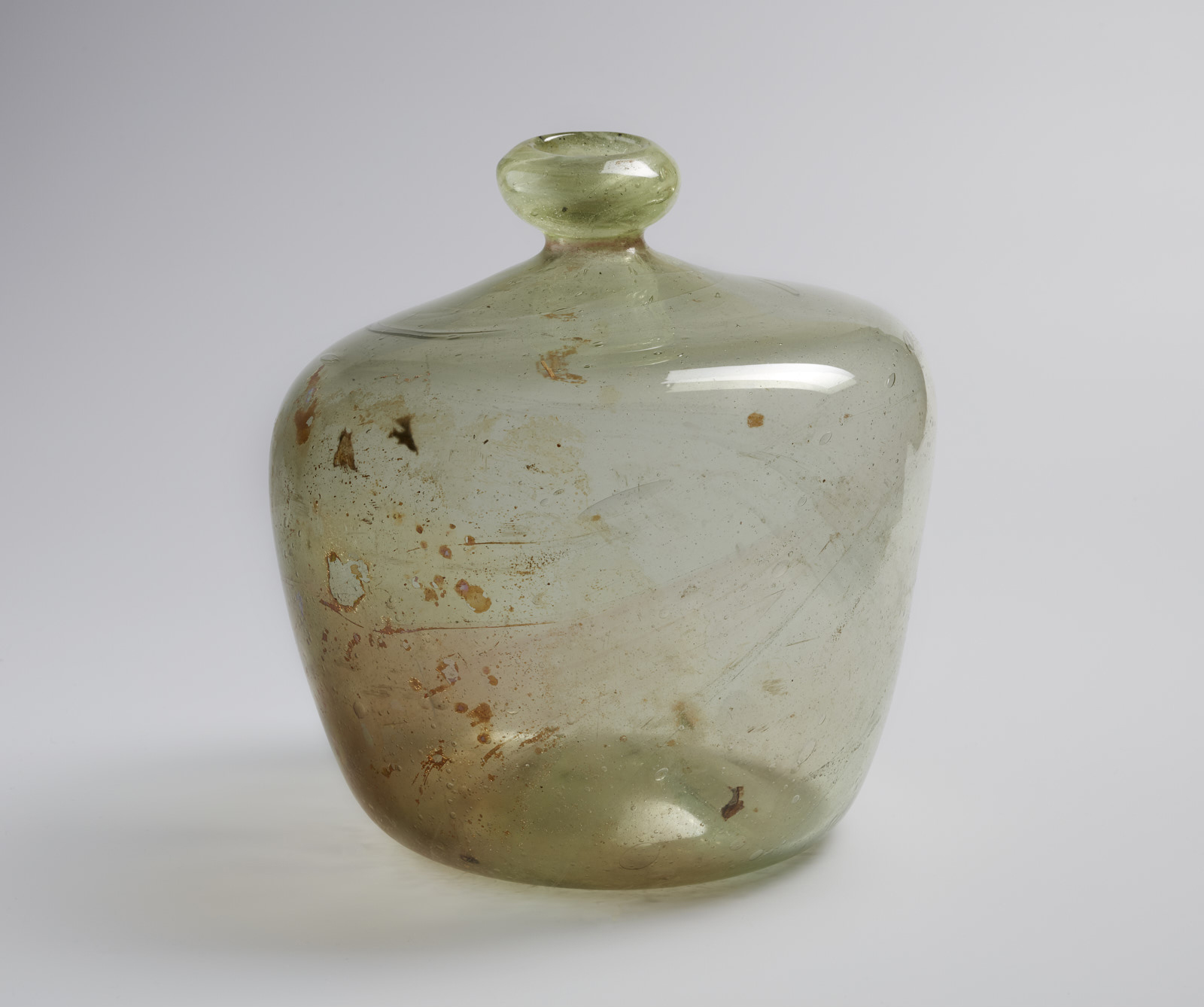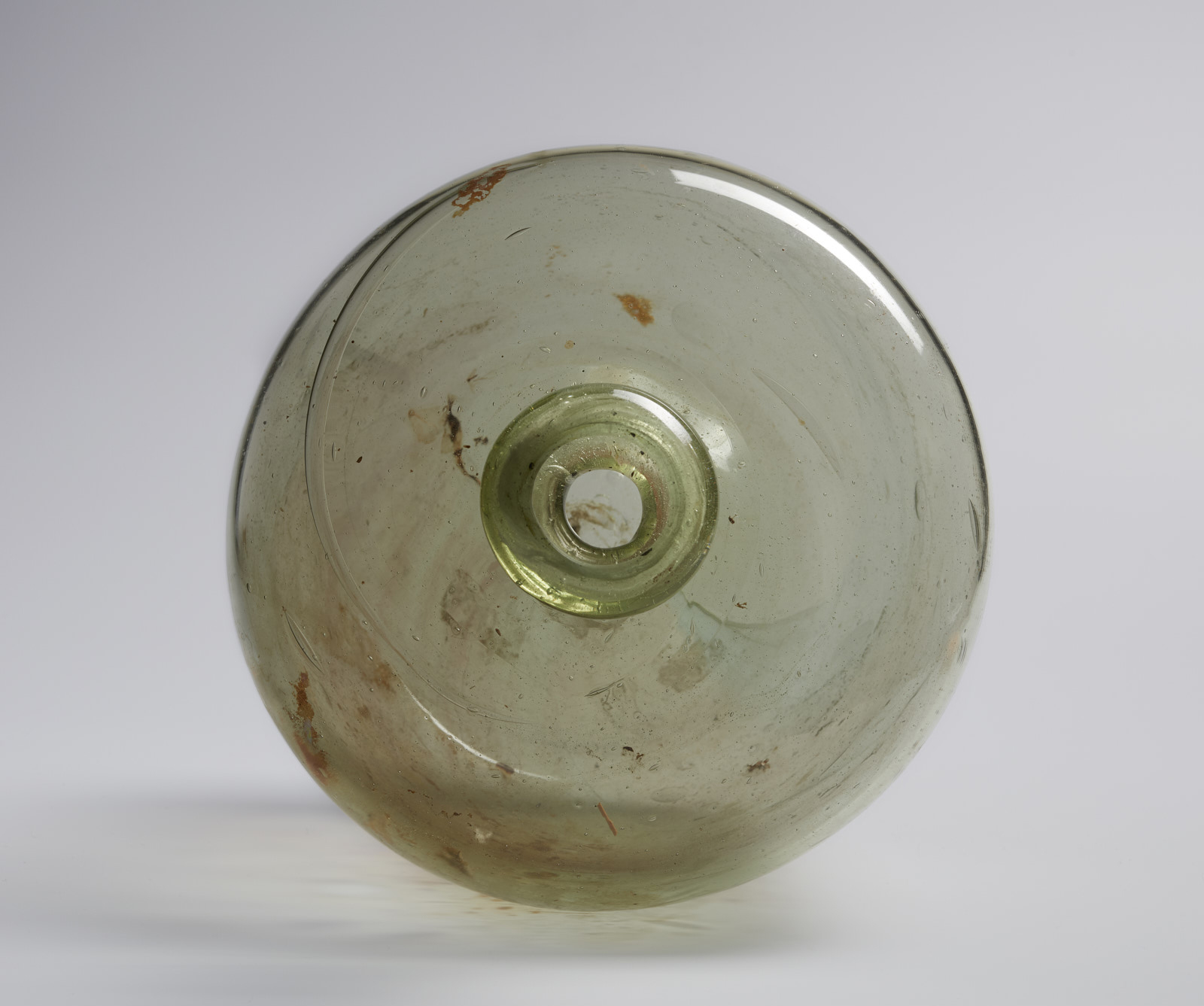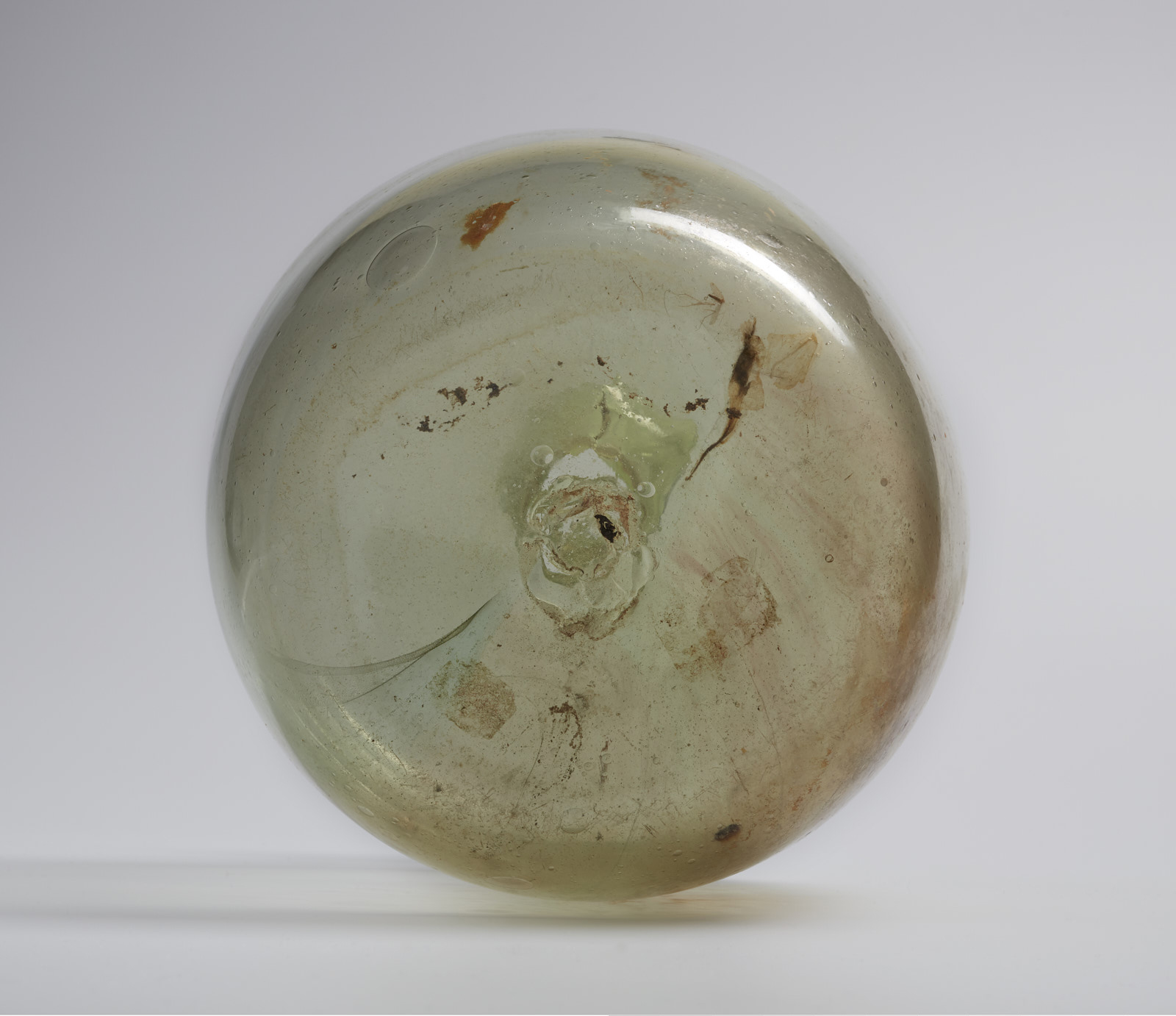Click on the image to zoom
Bottle
- Accession Number:AKM649
- Place:Egyptian or Syrian region
- Dimensions:height: 19 cm; diameter: 19.5 cm
- Date:10th–11th century
- Materials and Technique:glass, colourless, greenish tinge; free-blown, tooled and worked on the pontil
The absence of decoration on this bottle suggests that it belongs to the large group of utilitarian vessels which were made for everyday use in glass workshops throughout the Islamic world. Fragments of such vessels found during archaeological excavations tell us that they were blown in great quantities and in very different shapes and sizes. However, because very few vessels like this one actually survived, little is known about this group. Several features point to its origins in Egypt: its colourless glass with a greenish tinge; its short, rounded mouth; its rim that folds inwards; and the fact that this bottle has obviously been buried in a dry climate which has hardly destroyed its surface.[1] It is thus very likely that it was blown in Egypt during the period of the Fatimid caliphs (909–1171), a time when many varieties of glass vessels were produced (see AKM648).
Further Reading
Glass vessels made for everyday use included tableware such as plates, bottles, and ewers or pitchers as well as vessels used for transport, such as this example from the Aga Khan Museum Collection. Because they lack decoration, utilitarian vessels have had a history of neglect and have rarely reached museums collecting Islamic glass. Only a limited number of finds from archaeological excavations are known, such as those in Nishapur [2] in northeastern Iran or in the town of Old Cairo/Fustat [3] in Egypt. The remains of a cargo ship which sank in Serçe Limanı near Bodrum on the Aegean coast in Turkey in or shortly after 1025 have provided additional information about this glass group. The cargo which was loaded on the Levantine coast and contained numerous necks of bottles (called bubble-rim bottles).[4]
The typical mouth was achieved when a pontil, a metal rod with some glass added to it, was pushed onto the base of the vessel while still warm. This allowed to hold the vessel in place while the artisan shaped the vessel’s mouth. Once done, he would crack the pontil off, leaving a scar or pontil mark on the bottom of the vessel. Because of its few typical traits, it is impossible to say whether this bottle in the Aga Khan Museum Collection originated in Cairo in Egypt or in the Syrian region. The finds from the Serçe Limanı shipwreck confirm, however, that it was a type of bottle typical for this region.
Our knowledge about the possible uses of such bottles is rather limited, but its narrow neck and the typical pronounced rounded mouth suggest the vessel once held a liquid. Such bottles may have been made to store or transport lemon juice or other liquids over great distances, when demand for a particular product grew outside the region. The remains of palm tree leaves or some other material could be used to protect glass vessels during transport. Only vessels valued for their decoration or precious contents received special containers. In some regions, trade continued until the 20th century, when plastic bottles (often imitating older forms) finally replaced glass vessels.
— Jens Kröger
Notes
[1] A bottle with a related thick rounded mouth is said to be in the Museum of Islamic Art in Cairo. For a utilitarian bottle from 17th-century Iran with a rim that folds inward, see Carboni, 372, no. 102a.
[2] Kröger, 41–84.
[3] Scanlon and Pinder-Wilson, 21–59.
[4] Bass et al., 214–219.
References
Bass, George F. et al. Serçe Limanı, Volume II: The Glass of an Eleventh-Century Shipwreck. College Station: Texas A&M University Press, 2009. ISBN: 9780890969472
Carboni, Stefano. Glass from Islamic Lands. The Al-Sabah Collection. Kuwait National Museum. New York: Thames and Hudson, 2001. ISBN: 9780500976067
Kröger, Jens. Nishapur. Glass of the Early Islamic Period. New York: The Metropolitan Museum of Art, 1995. ISBN: 9780300192827
Scanlon, George T. and Ralph Pinder-Wilson, Fustat Glass of the early Islamic Period. Finds excavated by The American Research Center in Egypt 1964–1980. London: Altajir World of Islam Trust, 2001. ISBN: 9781901435078
Note: This online resource is reviewed and updated on an ongoing basis. We are committed to improving this information and will revise and update knowledge about this object as it becomes available.










